Zoap
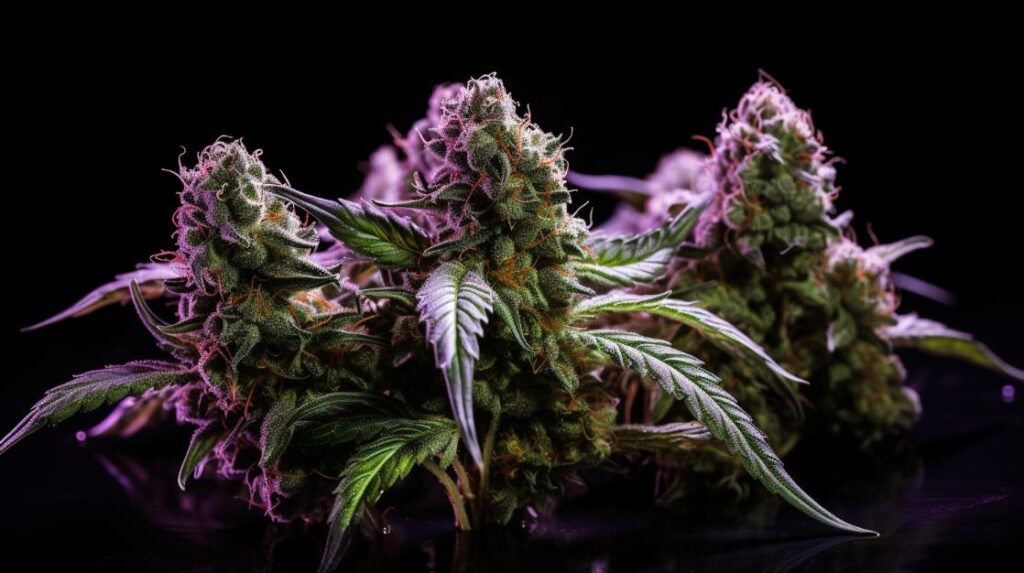
The Zoap Strain is a contemporary hybrid cannabis varietal renowned for its balanced effects and formidable genetic lineage, resulting from the crossbreeding of Pink Guava #16 and Rainbow Sherbet strains.
With THC levels averaging between 25% and 26%, Zoap delivers a robust experience characterized by a cerebral lift and euphoric sensations, followed by a soothing body relaxation. Its therapeutic potential is notable, particularly in managing depression, chronic stress, appetite disturbances, and persistent pain.
Connoisseurs appreciate Zoap for its distinct aromatic profile, which combines sweet and fruity notes with an earthy undertone. This strain has garnered attention in both recreational and medicinal cannabis circles, cementing its status as a versatile and desirable option for a wide range of users.
Genetic Lineage
The Zoap strain emerges from a meticulously crafted genetic lineage, originating from the inbreeding of Rainbow Sherbet and Pink Guava strains. As a hybrid, Zoap inherits a complex profile of characteristics that are indicative of its diverse ancestry.
The Rainbow Sherbet component in its lineage is itself a hybrid, renowned for its dynamic expression of hybrid vigor—resulting from the crossing of the Champagne and Blackberry strains. This genetic contribution imparts Zoap with a multifaceted terpene palette and a balanced high, which is enhanced by the exotic tropical influence of the Pink Guava.
Analyzing the genetic framework of Zoap further, we encounter foundational elements from the Zkittlez, OG, and Sherbet lines. These strains are celebrated for their robust terpene profiles and psychoactive potency. The OG lineage, in particular, infuses Zoap with its renowned therapeutic efficacy and depth of flavor, while the Zkittlez ancestry bestows a sweet, fruit-forward zest. The Sherbet genetics contribute a creamy, dessert-like quality to the strain’s aroma and flavor profile.
The interplay of these genetics culminates in Zoap’s clone-only status. This exclusivity underscores the precision with which this strain has been developed, ensuring a consistent and high-quality product for connoisseurs seeking its unique sensory and psychotropic effects.
THC/CBD Content
Zoap strain’s THC content averages between 25% and 26%, while its CBD levels are typically low, reflecting its breeding for maximum psychoactive efficacy. This substantial level of THC is indicative of the strain’s potent effects, which are sought after by both recreational and medicinal users. The low presence of CBD suggests that the strain is less focused on the non-psychoactive benefits that CBD is known for, and more on the strong cerebral and physical high THC provides.
The technical breakdown of the Zoap strain’s cannabinoid content is as follows:
-
THC Dominance: The high percentage of THC contributes to the strain’s powerful psychoactive experiences, which can include heightened sensory perception and a euphoric high.
-
Limited CBD: A minimal CBD content means the strain may not be the first choice for those seeking CBD’s therapeutic effects without the intense high THC delivers.
-
Terpenes and Cannabinoids Synergy: The interaction of terpenes like limonene with cannabinoids amplifies the strain’s therapeutic potential, contributing to its stress-relieving and mood-boosting properties.
-
Potent Effects: Users should be mindful of the potent effects due to the high THC level, which can be overwhelming for novices or those with a low tolerance.
An analytical focus on these components is crucial in understanding the full range of Zoap’s potential impact on the user.
Terpene Profile
While the high THC content of the Zoap strain contributes to its notable potency, the terpene profile plays a crucial role in defining its aromatic bouquet and therapeutic range.
The ensemble of terpenes present in Zoap, which includes caryophyllene, limonene, and linalool, not only bestows delicious aromas but also augments the strain’s medicinal efficacy. Caryophyllene, with its earthy and spicy notes, is a sesquiterpene that binds to CB2 receptors in the endocannabinoid system, thereby exhibiting pronounced anti-inflammatory effects. This makes it an integral component in the strain’s ability to alleviate chronic pain and inflammation.
Limonene, characterized by its vibrant citrusy scent, contributes to the well-balanced hybrid’s uplifting qualities. Its presence is often associated with mood enhancement and stress relief, potentially benefiting individuals dealing with anxiety and depression.
Furthermore, the inclusion of linalool adds a complex layer of floral subtlety to the strain’s profile. This terpene is recognized for its sedative properties, which may aid in the management of neurological disorders, such as epilepsy, and in promoting relaxation and sleep.
Collectively, the terpenes in the Zoap strain synergize to create a comprehensive therapeutic spectrum, enhancing its appeal to both recreational and medical cannabis consumers.
Effects
Inhaling the Zoap strain typically leads to immediate cerebral effects, characterized by a surge in euphoria and mental relaxation. The onset of these sensations is usually rapid, with users reporting a distinct shift in mood towards an uplifting and relaxing state. This shift is not merely subjective but is underpinned by the strain’s robust terpene profile and high THC content, which work synergistically to produce a pronounced psychoactive experience.
The effects of the Zoap strain can be broken down into the following:
-
Cerebral Stimulation: An initial head rush that elevates mood, often described as uplifting, lays the foundation for a mentally relaxing experience.
-
Anxiolytic Properties: Zoap’s effect on anxiety is significant, with users frequently reporting a substantial reduction in stress and an increase in feelings of well-being.
-
Analgesic Influence: The potent THC level contributes to Zoap’s pain-relieving capabilities, offering a reprieve to those with chronic pain by inducing a relaxing body sensation.
-
Appetite Enhancement: A common yet notable effect is the increase in appetite, making Zoap a suitable adjunct for individuals dealing with appetite loss.
Medical Uses
Due to its robust terpene profile and high THC content, the Zoap strain is utilized in the medical cannabis community for its therapeutic efficacy in treating a variety of conditions. The profile of this cultivar includes a range of bioactive compounds that synergistically interact with the body’s endocannabinoid system, which plays a pivotal role in regulating pain sensation, mood, and homeostasis.
Zoap cannabis is particularly noted for its analgesic properties, making it a viable option for patients suffering from chronic pain. The strain’s ability to modulate pain perception is attributed to its high levels of THC, which bind to CB1 receptors in the central nervous system, altering pain signals. This analgesic effect is complemented by the presence of specific terpenes known to exert anti-inflammatory actions, further reducing the sensation of pain.
Beyond pain relief, the anxiolytic and antidepressant potential of Zoap is underscored by patient reports of reduced anxiety and elevation of mood. The strain’s therapeutic benefits in mood disorders are likely linked to its interaction with serotonin receptors, enhancing neurotransmitter balance and emotional regulation.
Flavor and Aroma
Having established Zoap strain’s therapeutic efficacy, the cultivar’s distinct flavor and aroma profile, characterized by sweet, fruity, and earthy notes, further elevates its standing among cannabis connoisseurs and medical users alike.
The complex terpene constellation not only underpins the strain’s sensory attributes but also synergizes with cannabinoids to enhance the overall therapeutic experience.
The technical breakdown of Zoap’s flavor and aroma profile is as follows:
-
Terpene Composition: Dominant terpenes such as caryophyllene impart a spicy edge, while limonene delivers a sharp citrus burst reminiscent of grapefruit. Linalool contributes a floral subtlety, softening the profile with hints of lavender and a suggestion of woody aromatics.
-
Fruit-Forward Flavors: The strain’s palate is a tapestry of fruit-driven tones, with users often detecting the lush sweetness of apple and the tender tartness of apricot, enveloped by a spectrum of berry nuances, evoking the lavish essence of Rainbow Sherbert.
-
Complex Aroma: Zoap’s olfactory experience is a rich blend; the initial berry and chemical notes evolve into a deep, dark purple fruitiness, underscored by a damp, earthy base that grounds the sweet top notes.
-
Visual and Sensory Appeal: The strain’s visual allure, with vibrant trichomes set against dark purple foliage, serves as a precursor to its intricate flavor profile, promising a multisensory indulgence for both palate and perception.
This meticulous assemblage of flavors and scents positions the Zoap strain as a premium selection within the cannabis market.
Appearance
Building upon its complex flavor and aroma profile, the Zoap strain boasts a visually striking appearance, with dense buds that are a tapestry of color, coated in a thick layer of crystalline trichomes. The buds present a kaleidoscopic array that hints at its Rainbow Sherbet lineage, displaying hues that range from deep purples to vibrant greens, accented with fiery orange pistils. The presence of Pink Guava #16 in its genetics further enriches the visual palette, contributing to the occasional warm pink and red undertones that catch the eye.
From a technical standpoint, the trichome coverage on Zoap is substantial, signifying a high concentration of active cannabinoids and a rich terpene profile. These resin glands are microscopic, yet they densely populate the calyxes and sugar leaves, giving the flower a distinctly frosty look that is indicative of potency. The trichomes’ translucence and the way they refract light can make the buds appear almost as if they have been dusted with a fine, sugary coating.
Analytically speaking, the robust appearance of Zoap is not merely aesthetic but serves as a visual indicator of its complex terpene synthesis, which includes notes of citrus, berry, and a subtle chemical nuance. The strain’s vibrant and colorful appearance is a direct reflection of its genetic background, encompassing Zkittlez, OG, Pink Guava, and Sherbet lineages, which combine to produce a visually distinctive and appealing cannabis variety.
Grow Information
The cultivation process of Zoap leverages its resilient genetics, allowing growers to produce robust plants that mirror the strain’s vivid appearance and rich cannabinoid profile. As a hybrid cannabis strain, Zoap is characterized by its ability to thrive in diverse growing conditions, whether indoor or outdoor, making it a versatile choice for cultivators of varying expertise.
When considering the grow information for Zoap, the following points are crucial:
-
Ideal Conditions: Zoap prefers a controlled environment with consistent temperatures and moderate humidity levels. Indoors, growers can fine-tune conditions to optimize growth, while outdoor cultivators should seek areas that mimic these conditions naturally.
-
Flowering Period: The strain completes its flowering cycle within 8-10 weeks, a standard period for hybrid cannabis strains. Timing harvests correctly is essential to ensure maximum potency and terpene expression in the Zoap buds.
-
Nutrient Requirements: A balanced feeding schedule with a focus on macronutrients like nitrogen, phosphorus, and potassium will support the dense, trichome-rich bud development that Zoap is known for.
-
Training Techniques: Implementing low-stress training (LST) or the Screen of Green (SCROG) method can increase light exposure and airflow, promoting an even canopy and higher yields of the visually striking Zoap buds.
Adverse Effects
Regarding the Zoap strain, users have reported dizziness and dry mouth as the primary adverse effects. These symptoms are not uncommon when engaging with various cannabis products, due to the interaction of cannabinoids with the body’s endocannabinoid system. The manifestation of dizziness might be attributed to the strain’s potentially high tetrahydrocannabinol (THC) content, which can affect the vestibular system responsible for balance. This effect can be more pronounced in novice users or those with a lower tolerance to THC.
The incidence of dry mouth, or xerostomia, is frequently linked to the inhibition of salivary secretion. Cannabis compounds, particularly THC, can bind to salivary glands’ cannabinoid receptors, leading to a reduction in saliva production. This effect is also exacerbated by the strain’s terpene profile, which may influence the severity of dry mouth experienced by the user.
Analyzing these adverse effects is critical for understanding the full spectrum of the Zoap strain’s impact on consumers. It is advisable for users to stay hydrated and to consume the strain responsibly, as the propensity for these effects can vary greatly among individuals. Continuous monitoring and reporting of such adverse outcomes are essential for a comprehensive evaluation of the Zoap strain’s safety profile.
Comparisons with Similar Strains
Several cannabis strains share genetic similarities with Zoap, particularly in their terpene profiles and effects, offering comparable experiences for users. When analyzing strains that parallel the characteristics of Zoap, one must consider the following factors:
-
Terpene Synergy: Strains developed by Wizard Trees, the creators of Zoap, often exhibit a harmonious blend of caryophyllene, limonene, and linalool. This terpene trio is known for producing nuanced flavors and multifaceted therapeutic effects, such as stress relief and mood elevation.
-
THC Potency: Zoap’s high THC content is mirrored in strains like OZ Kush, which also boasts a robust cannabinoid profile. This level of potency is pivotal for users seeking intense psychoactive experiences, as well as significant analgesic effects for medicinal purposes.
-
Genetic Lineage: The genetic mosaic of Zoap, which includes Zkittlez and OG influences, is shared by other strains with similar parentage. This genetic overlap often results in comparable physical and cerebral effects, making them suitable alternatives for connoisseurs and patients alike.
-
Medical Efficacy: Strains akin to Zoap, with their ability to alleviate pain, inflammation, anxiety, depression, and stress, are sought after in the medical cannabis community. This therapeutic potential is a critical comparison point for users evaluating similar strains for treatment.
Research and Studies
Recent investigations into the Zoap strain have confirmed its notable high THC content and therapeutic potential for medical cannabis users. With an average THC potency of 25-26%, Zoap is among the more potent and popular strains available. This high THC concentration is significant as it indicates the strain’s potential efficacy in providing relief for various conditions such as chronic pain, anxiety, and depression.
The effects make it a subject of interest for both recreational users and those seeking medical benefits. Its terpene profile, featuring caryophyllene, limonene, and linalool, not only contributes to its distinct aroma and flavor but also enhances its therapeutic properties. These terpenes are associated with anti-inflammatory, anxiolytic, and antidepressant effects.
Further research could elucidate the specific mechanisms through which the Zoap strain exerts its effects, optimizing its use for targeted therapeutic outcomes. The following table summarizes key aspects of the research findings on the Zoap strain:
| Aspect | Detail |
|---|---|
| THC Potency | High (25-26%) |
| Main Terpenes | Caryophyllene, Limonene, Linalool |
| Anxiety Relief | 7% user-reported effectiveness |
| Therapeutic Uses | Pain, Inflammation, Anxiety, Depression, Stress |
| Cultivation | Relatively easy, suitable for various experience levels |
This data-driven approach to understanding cannabis strains like Zoap facilitates informed decisions for both medical practitioners and users.
History and Origin
The Zoap strain, an acclaimed hybrid, was developed by the collaborative efforts of Deep East (DEO Farms) and Wizard Trees, combining genetics from four distinctive lineages including Zkittlez, OG, Pink Guava, and Sherbet. This complex amalgamation of genetics has resulted in a unique profile that has quickly captivated cannabis connoisseurs and cultivators alike.
The history and origin of Zoap are as rich and intricate as its flavor profile, reflecting a meticulous breeding process that has led to its award-winning status.
-
Zkittlez Lineage: A multiple award-winning indica-dominant blend, Zkittlez contributed to Zoap’s sweet and fruity flavor profile, as well as its potent psychoactive effects.
-
OG Influence: The OG lineage is renowned for its strong cerebral and physical effects, lending Zoap its robust growth patterns and potent stress-relieving properties.
-
Pink Guava Genetics: Pink Guava #16, a phenotype selected for its exotic terpene profile and vibrant effects, provided a tropical twist and an uplifting experience to the Zoap strain.
-
Sherbet Cross: With its dessert-like aroma and calming influence, Sherbet’s inclusion in the mix adds a creamy smoothness and enhances the overall hybrid vigor of the Zoap strain.
Developed in DEEP EAST OAKLAND, Deo Farms has played a pivotal role in fine-tuning the cultivation process of Zoap, ensuring a consistent product that lives up to its prestigious origins.
Frequently Asked Questions
What Strain Is Zoap?
The inquiry pertains to the genetic makeup of a specific cannabis variety. Zoap genetics suggest a balance of sativa and indica, with cultivation tips emphasizing a nurturing environment for its potent, aromatic profile.
What Is the Strongest Type of Strain?
The strongest cannabis strains are characterized by high cannabinoid content and robust terpene profiles, which synergistically enhance potency and therapeutic efficacy, ideal for severe chronic conditions.
What Is Wiz Khalifa’s Strain?
Wiz Khalifa’s involvement in the cannabis industry includes developing celebrity strains tailored for specific effects. His signature offering exemplifies the trend of artist-branded cannabis products with distinctive qualities and targeted therapeutic applications.
What Is the Most Powerful Indica Strain?
When evaluating the most powerful indica strains, one must consider their profound sedative effects, the nuances of their cultivation, and the resulting cannabinoid profiles, which greatly influence their therapeutic efficacy and potency.

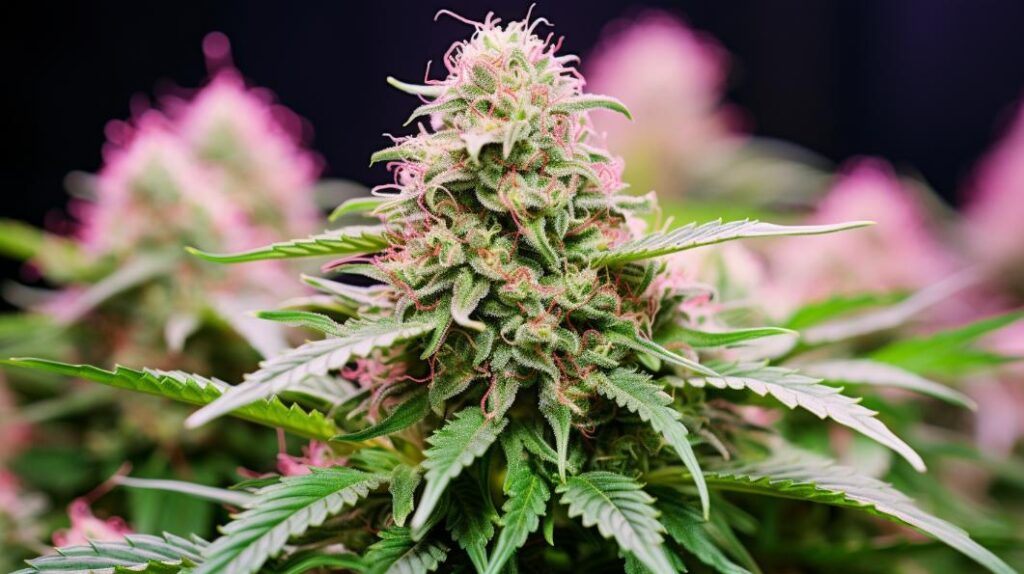

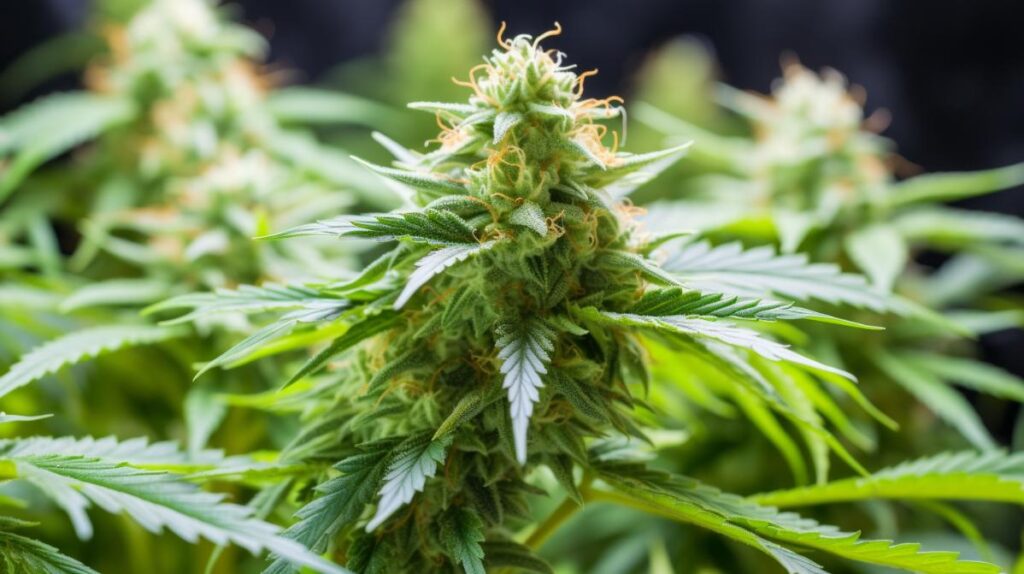
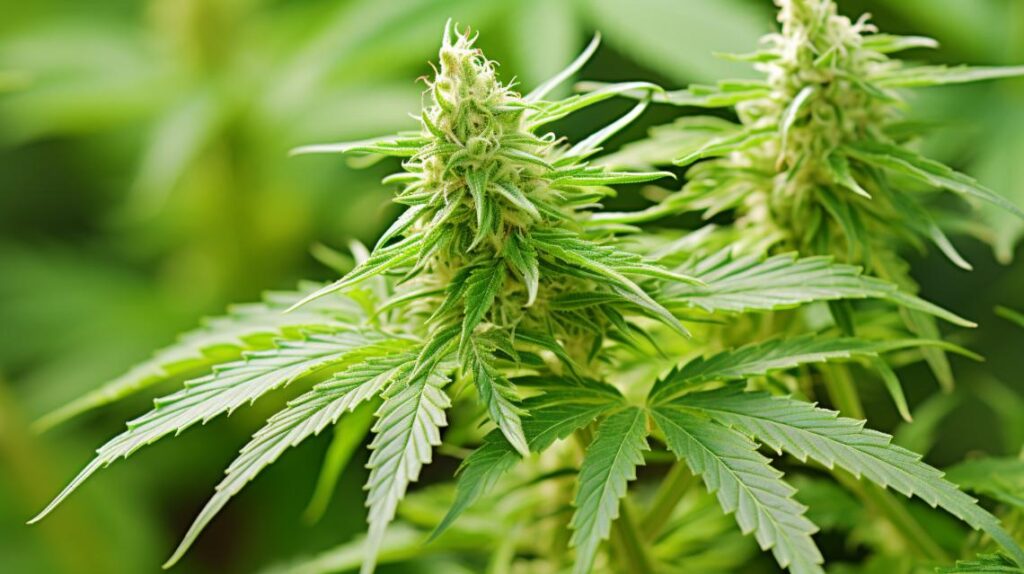
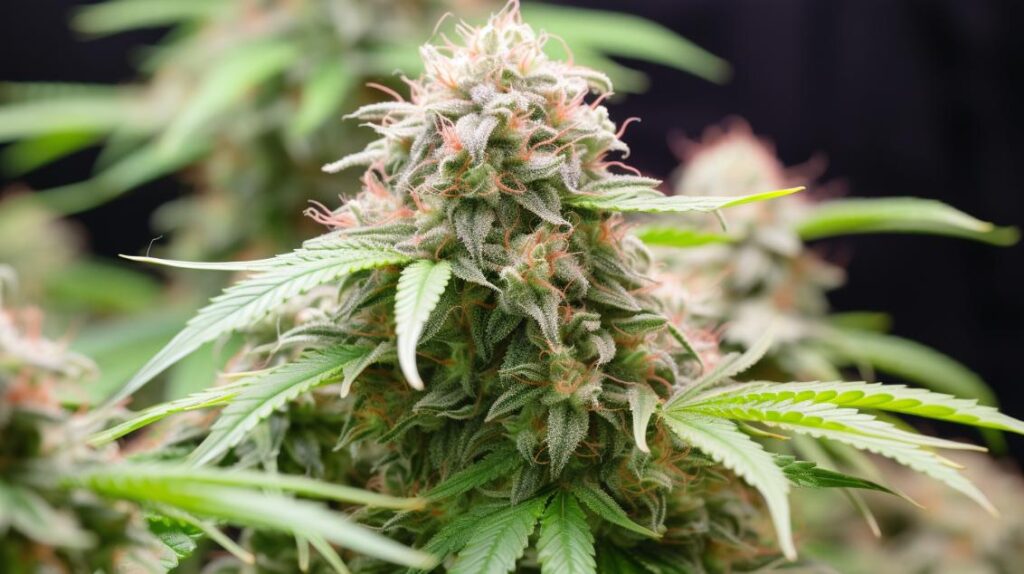

Responses